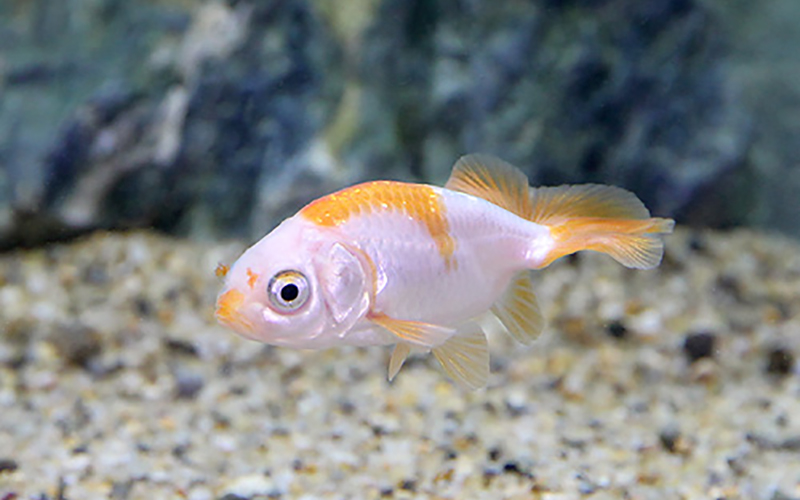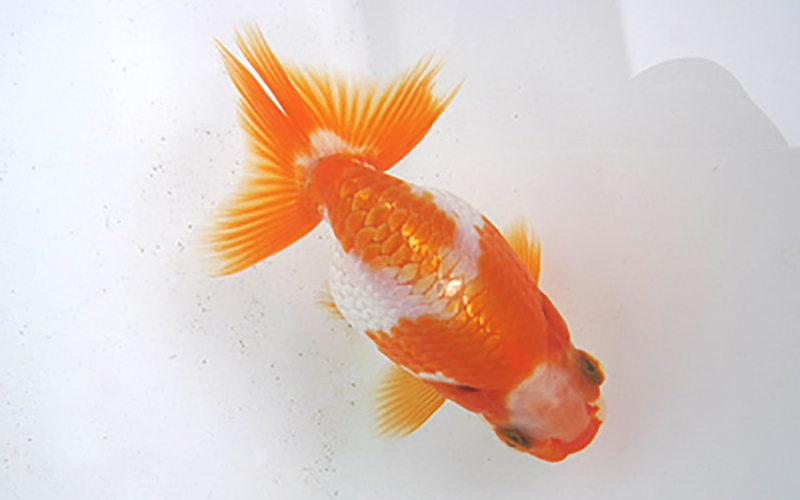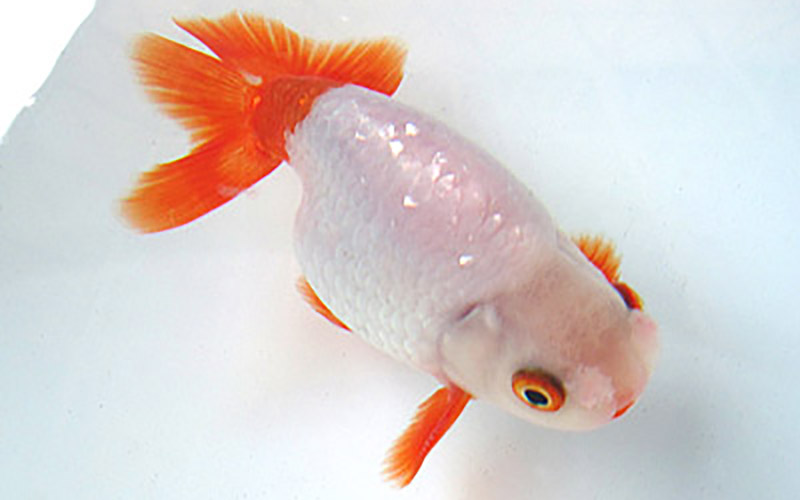ecology
The Osaka Ranchu is one of the oldest classified goldfish in the Ranchu lineage, having its roots in the Maruko (Maruko) as well as the Ranchu and Nankin varieties. In this article, we would like to explain in detail the characteristics of the Osaka Ranchu and how to keep it.
Table of Contents

Osaka Ranchu,This goldfish is one of the oldest classifications in the Ranchu lineage, which, like the Ranchu and Nankin varieties, has its roots in the Maruko (Maruko).The greatest feature of Osaka Ranchu is its strict regulations. For example, if the body length is 10, the width of the body should be 6.5 or more, which requires a very thick body. Also, there are detailed regulations regarding the size of the nostrils, which should not be too large, although they should have a nostril fold. Naturally, it is not easy to find an individual that satisfies all of these requirements, so this is currently positioned as the ideal condition for Osaka Ranchu.
Osaka Ranchu,There are no ancient documents or materials describing how and by whom the species was created and how its breeding began, and it remains a mystery to this day. However, there is a record of the oldest goldfish show (Naniwa Kinryokai) held in Osaka in 1862, and Osaka Ranchu was the subject of the show.As a side note, before the fair, Osaka Ranchu was called "patterned goldfish" and Ranchu was called "plain goldfish. These facts indicate that the history of Osaka Ranchu is very old. After World War II, there was a time when it was in danger of extinction. The reason is largely due to the popularity of the Kanto Ranchu. What we call Ranchu today is the Kanto Ranchu. The Osaka Ranchu was originally a goldfish loved by the wealthy people of the Kansai region due to strict regulations. However, when relatively inexpensive Ranchu were introduced from the Kanto region after World War II, they became popular among the general public because they were easy to catch on to. However, the decline of the world economy due to the Great Depression and other factors led to the bankruptcy of the wealthy, and the number of breeders of Osaka Ranchu declined dramatically. As a result, Osaka Ranchu breeders stopped producing Osaka Ranchu, which were no longer in demand, and shifted to producing Kanto Ranchu, which had been in increasing demand since the end of World War II, and the scale of the Osaka Ranchu breed shrank rapidly. After that, the Osaka Ranchu once became extinct. After the extinction, Nishikawa Goldfish Farm in Yamatokoriyama, Nara Prefecture, began to breed Kanto Ranchu with Nankin, and then with Tosakin, which has a distinctive tail fin, to make them more similar to Osaka Ranchu. Even today, the successors at the Nishikawa Goldfish Farm are working to restore the Osaka Ranchu.

How to enjoy Osaka Ranchu,It has a rounded body shape compared to the head and ranchu, which do not have much fleshy mass. For this reason, it is recommended to view them from above (top view) in a pot or other container rather than from the side (side view) in an aquarium.By viewing them from the top, you can appreciate the characteristics of Osaka Ranchu that are different from those of Ranchu, and one way to enjoy them is to check their beautiful patterns and the opening of their tail fins and think about which regulations they meet in your own way. Also, it is recommended to view Osaka Ranchu from the side to observe the absence of a dorsal fin and the presence of a mass of flesh, which is a different perspective from that of the top view.
When mixing goldfish with other goldfish and other species, there is sometimes uncertainty as to what species is good and what species is not. First,There is no general prohibition against this or that when mixing goldfish with other species.Therefore, depending on the personality and environment of the goldfish you keep, even species that are said to be bad for each other may get along well with each other. However, there is also the matter of compatibility between goldfish. If you put incompatible goldfish together, there is a high possibility that they will fight or that only one of them will monopolize the food. However, as I explained in the beginning, there is no prohibition for goldfish to mix with each other, so if you want to mix them, you may do so. Now, I will explain the goldfish that are compatible with Ranchu and those that are not.
Goldfish that are most compatible with Osaka Ranchu are Ranchu-type goldfish such as Ranchu and Edonishiki.Since the Osaka Ranchu breed is a very poor swimmer, we recommend a Ranchu-type goldfish, which is also a poor swimmer, so that the goldfish will eat the food first and will be less stressed by being chased by other goldfish.
Goldfish that are incompatible with Osaka Ranchu are Japanese goldfish such as Wakin (Japanese goldfish) and Comet (Japanese goldfish).Many Japanese goldfish are agile and grow large in a short period of time. If you mix them with Japanese goldfish, please be aware that Osaka Ranchu may be eaten by other Japanese goldfish, and the difference in body size may cause them to move apart.

Osaka Ranchu,The way to keep them is not much different from that of the Ranchu. Originally, the Ranchu and Osaka Ranchu were positioned as one to enjoy the shape and form of the Ranchu and the other to enjoy the patterns and colors of the Osaka Ranchu.However, nowadays, the Ranchu itself has been subdivided into a number of different Ranchu strains, and the reality is that Osaka Ranchu is not well-known. However, thanks to the efforts of Osaka Ranchu lovers and Nishikawa Goldfish Farm, efforts are being made to restore them. Osaka Ranchu are very scarce in terms of distribution. If you are interested in them, we recommend that you contact the Osaka Ranchu Enthusiasts' Association and try to obtain them.